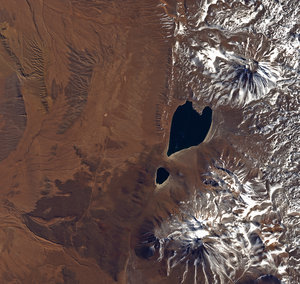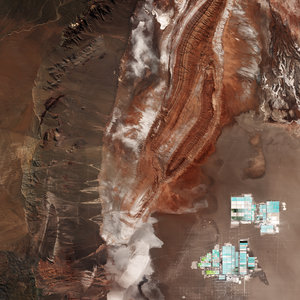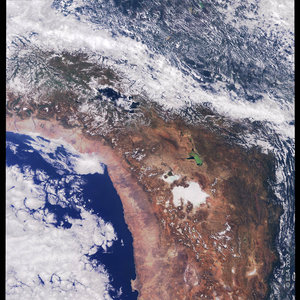Accept all cookies Accept only essential cookies See our Cookie Notice

About ESA
The European Space Agency (ESA) is Europe’s gateway to space. Its mission is to shape the development of Europe’s space capability and ensure that investment in space continues to deliver benefits to the citizens of Europe and the world.
Highlights
ESA - United space in Europe
This is ESA ESA facts Member States & Cooperating States Funding Director General Top management For Member State Delegations European vision European Space Policy ESA & EU Space Councils Responsibility & Sustainability Annual Report Calendar of meetings Corporate newsEstablishments & sites
ESA Headquarters ESA ESTEC ESA ESOC ESA ESRIN ESA EAC ESA ESAC Europe's Spaceport ESA ESEC ESA ECSAT Brussels Office Washington OfficeWorking with ESA
Business with ESA ESA Commercialisation Gateway Law at ESA Careers Cyber resilience at ESA IT at ESA Newsroom Partnerships Merchandising Licence Education Open Space Innovation Platform Integrity and Reporting Administrative Tribunal Health and SafetyMore about ESA
History ESA Historical Archives Exhibitions Publications Art & Culture ESA Merchandise Kids Diversity ESA Brand Centre ESA ChampionsLatest
Space in Member States
Find out more about space activities in our 23 Member States, and understand how ESA works together with their national agencies, institutions and organisations.
Science & Exploration
Exploring our Solar System and unlocking the secrets of the Universe
Go to topicAstronauts
Missions
Juice Euclid Webb Solar Orbiter BepiColombo Gaia ExoMars Cheops Exoplanet missions More missionsActivities
International Space Station Orion service module Gateway Concordia Caves & Pangaea BenefitsLatest
Space Safety
Protecting life and infrastructure on Earth and in orbit
Go to topicAsteroids
Asteroids and Planetary Defence Asteroid danger explained Flyeye telescope: asteroid detection Hera mission: asteroid deflection Near-Earth Object Coordination CentreSpace junk
About space debris Space debris by the numbers Space Environment Report In space refuelling, refurbishing and removingSafety from space
Clean Space ecodesign Zero Debris Technologies Space for Earth Supporting Sustainable DevelopmentLatest
Applications
Using space to benefit citizens and meet future challenges on Earth
Go to topicObserving the Earth
Observing the Earth Future EO Copernicus Meteorology Space for our climate Satellite missionsCommercialisation
ESA Commercialisation Gateway Open Space Innovation Platform Business Incubation ESA Space SolutionsLatest
Enabling & Support
Making space accessible and developing the technologies for the future
Go to topicBuilding missions
Space Engineering and Technology Test centre Laboratories Concurrent Design Facility Preparing for the future Shaping the Future Discovery and Preparation Advanced Concepts TeamSpace transportation
Space Transportation Ariane Vega Space Rider Future space transportation Boost! Europe's Spaceport Launches from Europe's Spaceport from 2012Latest

Chile's Atacama Desert
Thank you for liking
You have already liked this page, you can only like it once!
This Envisat image was acquired over northern Chile's Atacama Desert, the driest place on Earth outside of the Antarctic dry valleys.
Bounded on the west by the Pacific and on the east by the Andes, the Atacama Desert only knows rainfall between two and four times a century. The first sight of green in this Medium Resolution Imaging Spectrometer (MERIS) image occurs some 200 kilometres west of the coast, at the foothills of the Western Cordillera, where wispy white clouds start to make an appearance.
There are some parts of the desert where rainfall has never been recorded. The only moisture available comes from a dense fog known as camanchaca, formed when cold air associated with ocean currents originating in the Antarctic hits warmer air. This fog is literally harvested by plants and animals alike, including Atacama's human inhabitants who use 'fog nets' to capture it for drinking water.
The landscape of the Atacama Desert is no less stark than its meteorology: a plateau covered with lava flows and salt basins. The conspicuous white area below the image centre is the Atacama Salt Flat, just to the south of the small village San Pedro de Atacama, regarded as the centre of the desert.
The Atacama is rich in copper and nitrates – it has been the subject of border disputes between Chile and Bolivia for this reason - and so is strewn with abandoned mines. Today the European Southern Observatory (ESO) has located in high zones of the Atacama, astronomers treasuring the region's remoteness and dry air. The Pan-American Highway runs north-south through the desert.
Along the Pacific coast, the characteristic tuft-shape of the Mejillones peninsula is visible, where the town of Antofagasta lies just south of Moreno Bay on the southern side of the formation.
This MERIS full resolution image was acquired on 10 January 2003 and has a spatial resolution of 300 metres.
-
CREDIT
ESA -
LICENCE
CC BY-SA 3.0 IGO or ESA Standard Licence
(content can be used under either licence)

Heart of the Atacama

Salar de Atacama, Chile

Atacama Desert

Atacama minerals















 Germany
Germany
 Austria
Austria
 Belgium
Belgium
 Denmark
Denmark
 Spain
Spain
 Estonia
Estonia
 Finland
Finland
 France
France
 Greece
Greece
 Hungary
Hungary
 Ireland
Ireland
 Italy
Italy
 Luxembourg
Luxembourg
 Norway
Norway
 The Netherlands
The Netherlands
 Poland
Poland
 Portugal
Portugal
 Czechia
Czechia
 Romania
Romania
 United Kingdom
United Kingdom
 Slovenia
Slovenia
 Sweden
Sweden
 Switzerland
Switzerland

























